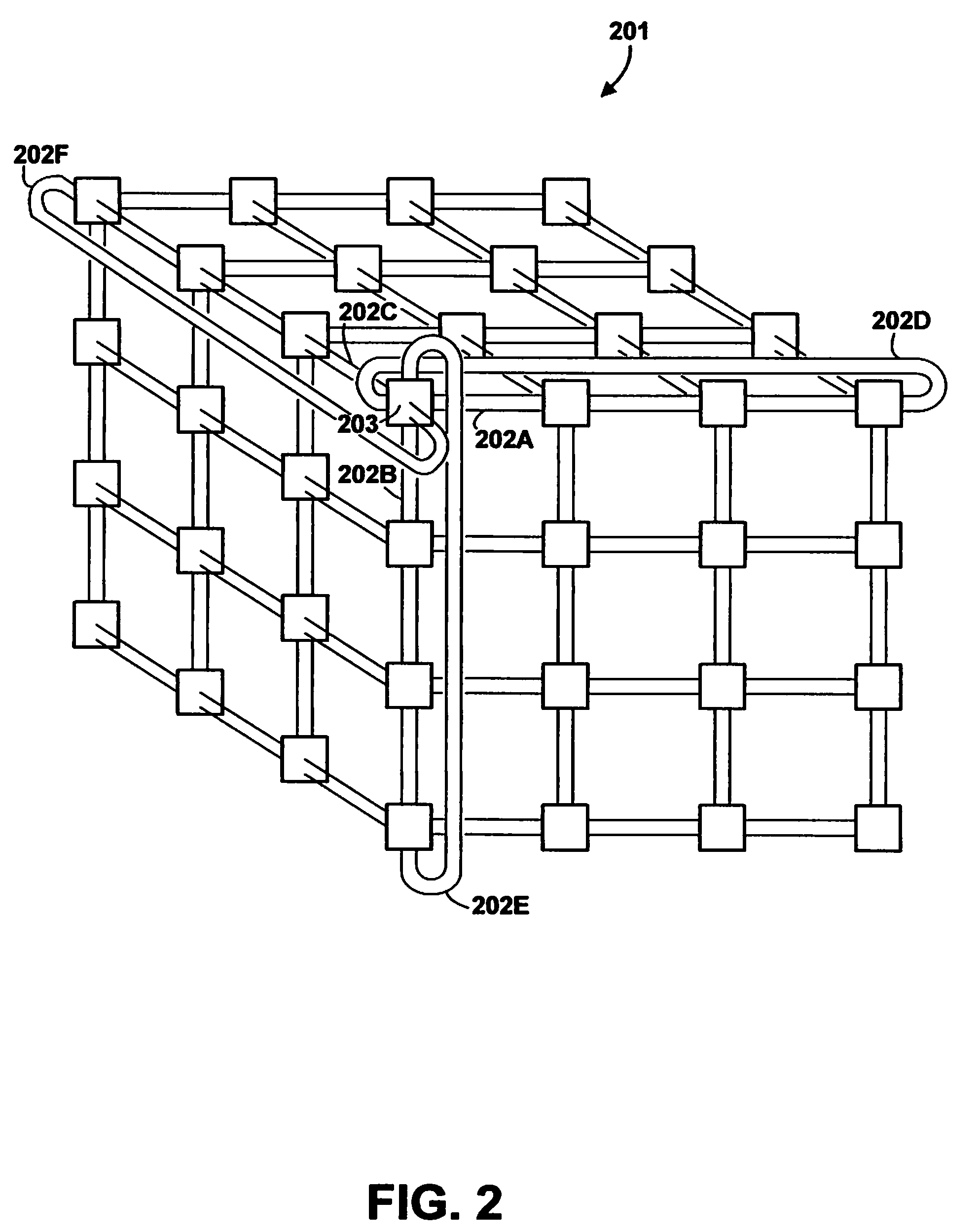Method and apparatus for obtaining stack traceback data for multiple computing nodes of a massively parallel computer system
a computer system and stack traceback technology, applied in the field of digital data processing, can solve problems such as substantial performance reduction, and achieve the effect of a higher degree of confiden
- Summary
- Abstract
- Description
- Claims
- Application Information
AI Technical Summary
Benefits of technology
Problems solved by technology
Method used
Image
Examples
Embodiment Construction
[0023]Referring to the Drawing, wherein like numbers denote like parts throughout the several views, FIG. 1 is a high-level block diagram of the major hardware components of a massively parallel computer system 100 in accordance with the preferred embodiment of the present invention. In the preferred embodiment, computer system 100 is an IBM Blue Gene™ computer system, it being understood that other computer systems could be used, and the description of a preferred embodiment herein is not intended to limit the present invention to the particular architecture described. Additional background information concerning the architecture of an IBM Blue Gene™ computer system can be found in commonly assigned copending U.S. patent application Ser. No. 11 / 316,247 by Bryant et al., entitled “Method and Apparatus for Improving Block Allocation Times in a Computer System”, which is herein incorporated by reference.
[0024]Computer system 100 comprises a compute core 101 having a large number of co...
PUM
 Login to View More
Login to View More Abstract
Description
Claims
Application Information
 Login to View More
Login to View More - R&D
- Intellectual Property
- Life Sciences
- Materials
- Tech Scout
- Unparalleled Data Quality
- Higher Quality Content
- 60% Fewer Hallucinations
Browse by: Latest US Patents, China's latest patents, Technical Efficacy Thesaurus, Application Domain, Technology Topic, Popular Technical Reports.
© 2025 PatSnap. All rights reserved.Legal|Privacy policy|Modern Slavery Act Transparency Statement|Sitemap|About US| Contact US: help@patsnap.com



